As Bible teachers, we all desire to see our students knowledgeable and excited about the God of the Bible. What tools can we use to bring the Bible to life when we lead periods of instruction? How do we engage students’ attention so that they are focused on the biblical content we are sharing? In this series, we will consider what research shows about best practices for teacher-led instruction, applied specifically to Bible.
A key component in all Bible instruction is the reading aloud of Scripture. Culturally, we may think that reading aloud is only for young children, but research shows that this simple practice is best continued over the years. Reading aloud is key with complex passages, and students will learn to read aloud vibrantly through the teacher’s modeling.
Let’s begin with how we as teachers can practice expressive storytelling, from the elementary classroom onward. The Bible Project estimates that narratives—or stories—account for 43% of Scripture. If we consider the many historical books of both the Old and New Testament, we see that the accounts of Jesus, the early Christians, and the Israelites who came before account for a great deal of Scripture.
Stories are perhaps the most naturally engaging form of literature since they involve characters, emotion, and twists-and-turns. Children love to re-tell stories. “Mom, guess what happened at school today?” The rising-and-falling action of the plot keeps their attention far better than textbooks.
I spoke with Dr. Yvonne Van Ee, professor emerita of education at Calvin University, as well as with Evelyn Reith, a current elementary teacher at Kirk Day School in St. Louis. Here are the tips I gathered from them on reading the Bible’s narratives with vibrant storytelling:
1. Enthusiasm Should be Visible and Audible
We do not need to be excellent actors, able to render characters with dialects. But Dr. Van Ee asks: “Am I enthusiastic about Scripture? And does my enthusiasm show?” We show the drama in our faces through raised eyebrows, furrows, or smiles. And students are drawn in by hushed tones, changing volume, and modulating pitch. Even when we personally feel tired or listless, we should “take on” a bit of drama and energy for the sake of reading Scripture, since children catch the attitude they see modeled. Stay physically close to your students and keep their desks clear of distractions, to promote face-to-face interaction while you speak.
2. Decide Whether to Read or Tell
The stories of Scripture differ in complexity. Jesus’ parable of the Wise and Foolish Builders in Matthew 7 is only four verses long, with straightforward characters and actions. Even young children can understand this story read directly from the Bible. David and Goliath, however, is 58 verses long and refers to historical names and places that are hard to pronounce, let alone understand. Consider how to match the length and complexity to your students’ ability level, choosing what to omit or paraphrase. Then add detail about the setting, emotion, and historical culture. Details make a story come to life!
3. Option 1: Tell the Story from an Outline
Dr. Van Ee recommends elementary teachers study the Bible story for themselves, imagining how they can bring it to life for students, but keeping just an outline of the story in front of them. An outline will help you remember the primary points to touch upon, but also allow you to add or subtract details on the spot as you sense your students’ understanding. Bible curricula like Walking With God and His People offer prepared outlines for episodes that are difficult to read directly.
4. Option 2: Read Aloud a Paraphrase
Several gifted storytellers have published their paraphrased Bible stories, which ChristianBook.com categorizes as “Bible storybooks.” These storybooks range from very close to the original text of Scripture to very simple, for preschool use. Here is one recommendation for Bible storybooks based on age, but every teacher will have their own preference. Consider choosing a version that your children will find accessible, while still stretching their vocabularies toward the actual words of Scripture. Research shows that—when read aloud—students can access texts a grade or two above their grade-level.
5. Use the Tools of Drama
We can use our voices to engage children’s imaginations and create excitement for the story. First, consider the characters: Can you differentiate between them? Does a dialogue use a different tone of voice for each character? One high-pitched, one low-pitched? One gruff, one gentle? If the text implies certain characteristics, such as “impulsive” Peter or “angry” Pharisees, those are key facts to hone in on. And remember: Silence is dramatic. A pause allows students to anticipate what will happen next, often causing eyes to grow wide or giggles, as they await the climax.
6. Involve the Audience
The best-loved children’s stories have repeated refrains like, “Little pig, little pig, let me come in.” Consider what phrase you can repeat throughout the story, inviting students to join in each time the refrain occurs. Children can also be involved in the storytelling by adding sound effects. Which characters and parts of the plot could create sound? Footsteps? Animal sounds? Wind? Children love adding to the drama of the scenario, as though they were there.
7. Consider Adding One Simple Visual
The beauty of words is that they allow students to imaginatively envision the scene for themselves. Supplying too many images or student-tasks during oral storytelling can negatively impact attention on the story itself. However, a well-chosen prop or visual can make the story memorable and help students stay engaged. “It’s helpful for kids to create a visual because drawing the story keeps them engaged. Have early finishers draw an additional component,” suggests Evelyn, from her experience in her elementary classroom at Kirk Day School. Student art can also help us assess what they heard and processed.
Storyteller Matthew Friday notes that oral stories have been a part of all human cultures. “Storytelling is the oldest form of teaching,” he writes at Edutopia. “Stories define us, shape us, control us, and make us. Not every human culture in the world is literate, but every single culture tells stories.”(1) How wise of our Father, then, to give us a story! May our hearts be swept up in the drama of redemption, so we may communicate the sweetness of the Savior to our students.
Additional Storytelling Resources
The Art of Storytelling by John Walsh
“Why Every Class Needs Read Alouds” by Laura Varlas
References
1. Friday, Matthew James, “Why Storytelling in the Classroom Matters,” last modified July 11, 2014. https://www.edutopia.org/blog/storytelling-in-the-classroom-matters-matthew-friday
Written by Heidi Dean
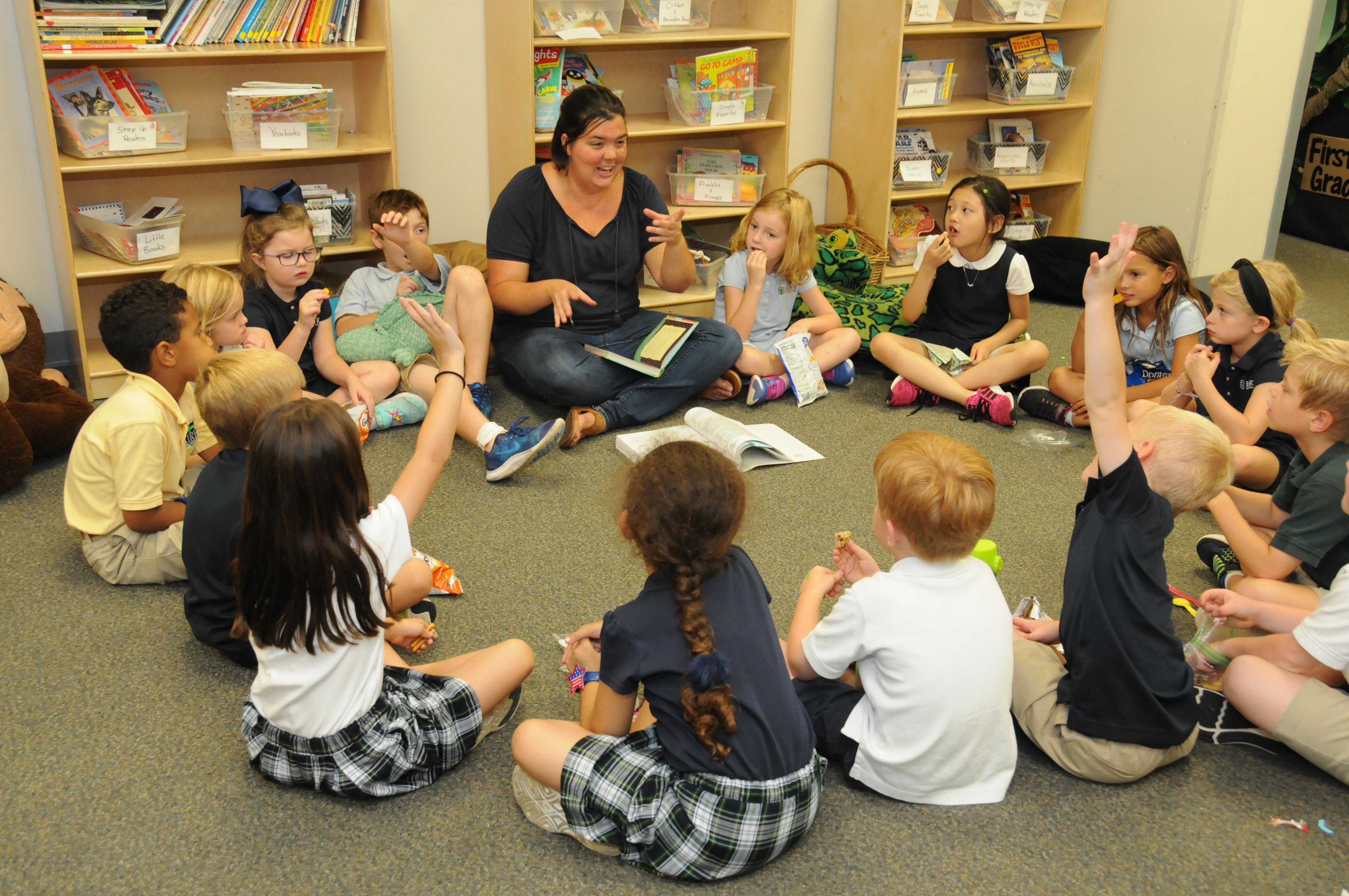
Sitting in a circle ensures these students at Kirk Day School are best positioned to catch their teacher’s expression and excitement.
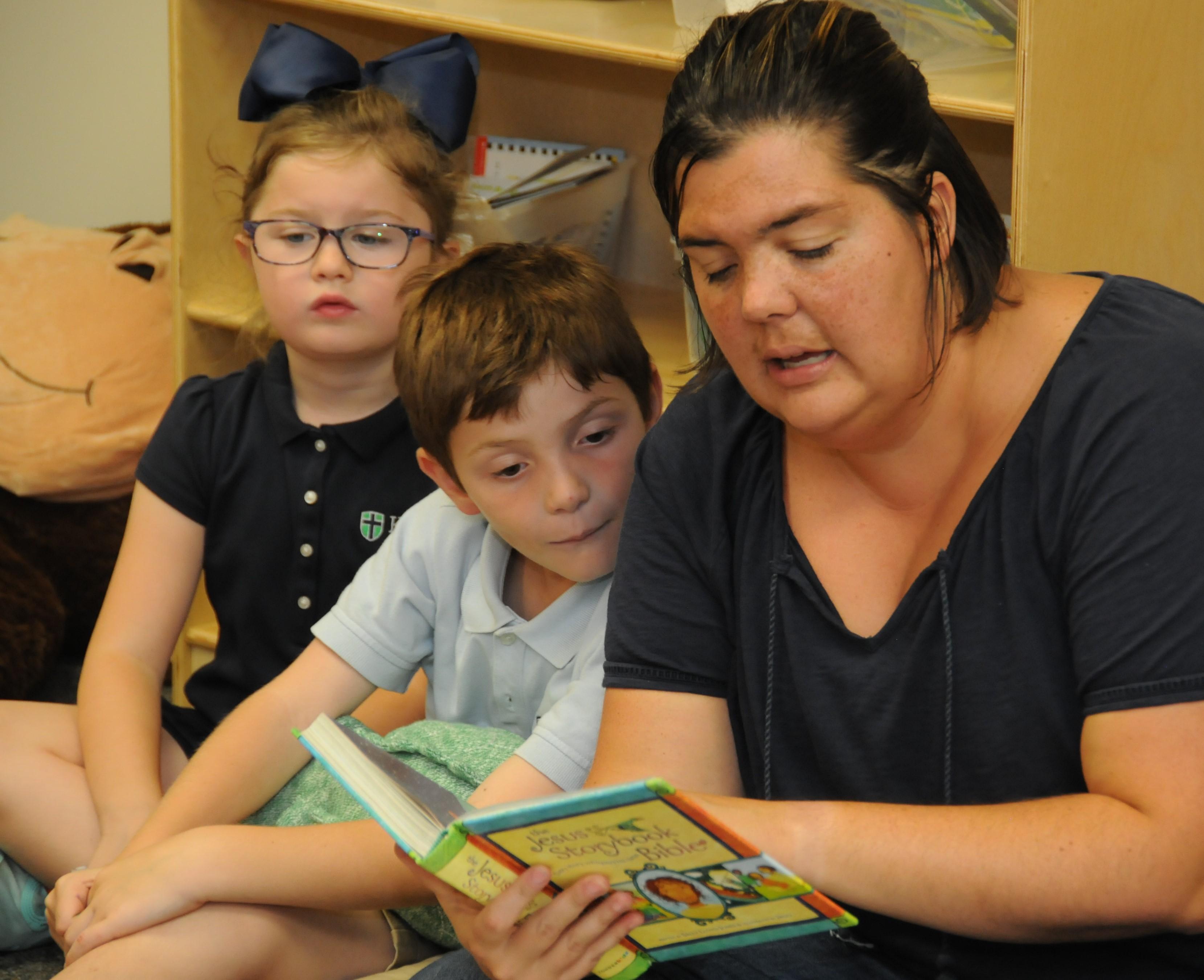
Being physically close to their teacher, Evelyn Reith, promotes students’ connection to the story and the storyteller, while their teacher monitors behavior.
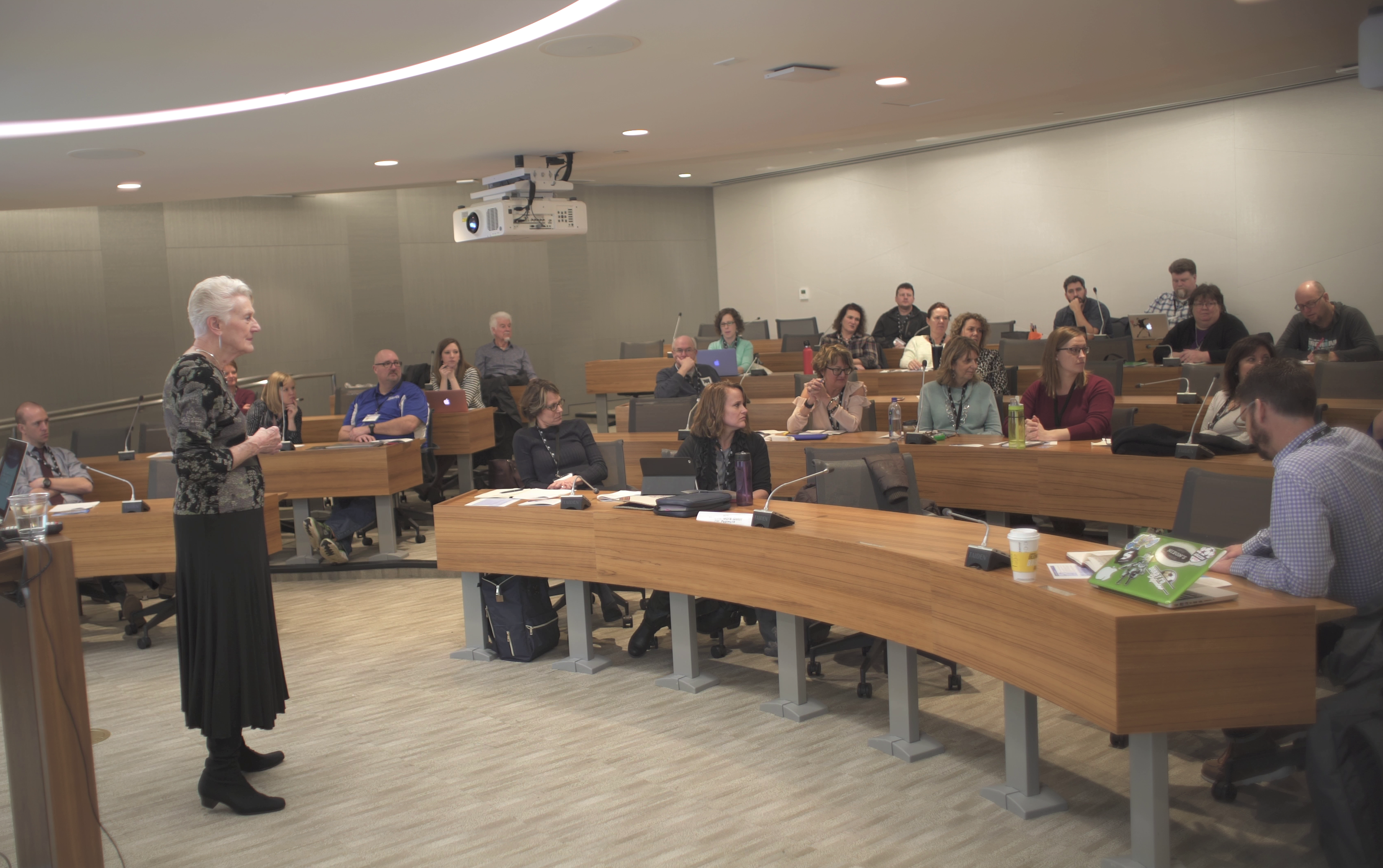
Dr. Yvonne Van Ee led elementary teachers in the art of Bible storytelling at the 2018 CSI Bible Instruction Symposium.
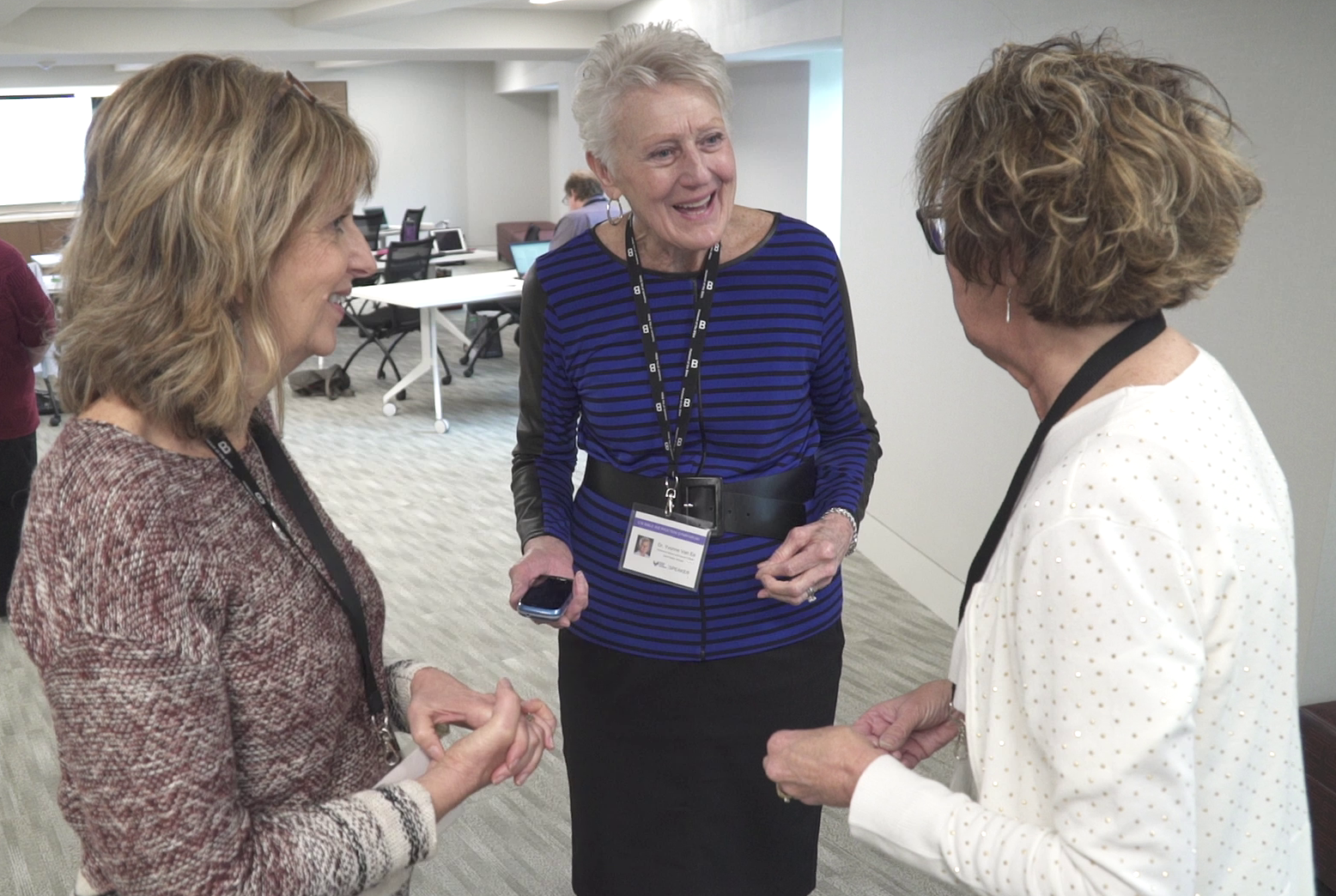
Collaborating with other Bible instructors is a way to share best practices and try new ideas in the classroom.
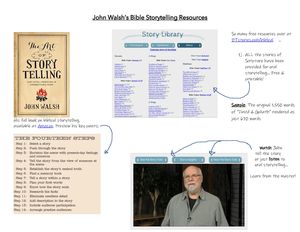
Bible Storytelling Resource
A Bible storytelling resource from John Walsh, founder of BibleTelling and The Christian Storytelling Conference.